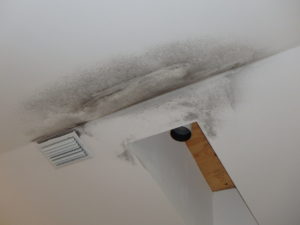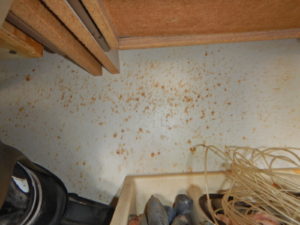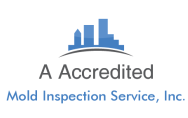Should I Test For Mold?
In part one of this article we discusses why testing is often not needed.
Below we discuss some benefits of mold testing.
TEST FOR MOLD TO ESTABLISH THE EXTENT AND LEVEL OF CONTAMINATION
A mold inspector can only have a general idea as to how contaminated the air is via a visual investigation. A test for mold spores is more helpful at determining how contaminated the air is. At A Accredited Mold Inspection Service we always take mold samples to get a detailed idea of how many spores are in the air. If you need a mold inspection give us a call.
DETERMINING IF THE MOLD IS AN INFECTIOUS SPECIES
Another example of when it is helpful to test for mold in the home is in cases related it fungal infections. If a homeowner has an aspergilloses fungal infection caused by Aspergillus flavus it is beneficial to take viable samples. Viable samples can help us to determine if levels of Aspergillus flavus in the home are elevated. If the client has a deadly Mucor mycosis infection in the sinuses, then we can test for mucor. In the last 20 years of testing for mold, I have conducted inspections for clients with fungal infections four times. In cases where building occupants are suffering from fungal infections we utilize an Anderson impactor late. This device is used so that infectious molds can be identified to the species level.
DETERMINING POTENTIAL LEVELS OF ALLERGINIC MOLDS
In the vast majority of the cases client health issues are caused by exposure to allergens and irritants caused by exposure to mold and it’s spores. These types of reactions are not related to the type of mold, but are related to the amount of mold in the building. In addition, allergies are also related to the sensitivity level of the clients. By testing for mold levels we can establish if spore levels are elevated. Thus, we can show if a sensitive individual was exposed to elevated levels of spores that may explain health issues.

This mold was caused by warm humid air in a home we did mold testing on in Wellington near West Palm Beach Fl.
DETERMINING WHAT CAUSED THE MOLD
Another benefit of testing mold is it to give us clues as to what caused the mold. Some molds like Chaetomium, Fusarium, Stachybotrys, Memnoniella, Aspergillus niger, are found after flooding occurs. Pen Asp can be caused by flooding or humidity. Cladosporium can be caused by flooding or condensation. I have use the identification of these fungi to show in court on more than one cases that the mold was caused by severe widespread flooding that the property owner tried to hide.

Golden tan humidity mold found during mold testing in cabinets of a Palm Beach Gardens townhouse. This type of mold grows very slowly.
TEST FOR MOLD TO DETERMINING IF DAMAGE IS OLD OR NEW.
Other application of testing is to get a basic idea of if you have old growth or new growth. The presence of a large growth of Stachybotrys can be utilized to establish evidence that the mold is older growth and not very new. This growth often do not becomes established quickly after flooding, and grows relatively slowly once it is established. I have used this information on a couple of expert witness investigations to help effectively establish that the growth was several months or years old, v.s. days or weeks old.
From reading this you may get the idea that samples are all important, but the truth is more than 95% of a quilified mold inspectors truly helpful information comes not from the samples, but from the inspection part of the investigation. An inspectors time and resources are far better spent on inspecting your property than testing your air and swabbing your walls. The important answers come from doing a detailed hours long investigation of the property in question. The important answers come from the inspectors eyes, nose, tools, and problem solving skills, and NOT SAMPES. A proper mold inspection is useful to uncover the location of fungal growth, and the building defects that caused it.
The big questions have always been and will always be:
1) What are the causes and origins of moisture, condensation, or humidity that resulted in fungal proliferation ?
2) How extensive is the problem ?
3) How to remediate the fungal problem so it does not come back ?
For your benefit we always test, sample, identify, and describe the types of molds growth. In addition, we also do the important job of trying to figure out why you have mold and how to best get rid of it. You need to know how to change your indoor ecology or indoor environmental conditions so it is not favorable to future growth.
In Conclusion
Our certified mold inspector always tests for mold in order to be sensitive to our paying customers expectations. Sometimes we test to gain important helpful information. Our real goal is to get you to understand why it is growing in your home. In addition, we find out how to attack the root cause, and how it can be removed properly. This has been our philosophy from 2003 to the present and still is our philosophy.
Give us a call to schedule mold testing and inspection
1-888-381-6651
About the Author:
Daryl Watters is a state licensed mold assessor and a certified indoor air quality consultant. To hire someone to test for mold in West Palm Beach or anyplace in Southeast Florida visit: www.floridamoldtesting.net



